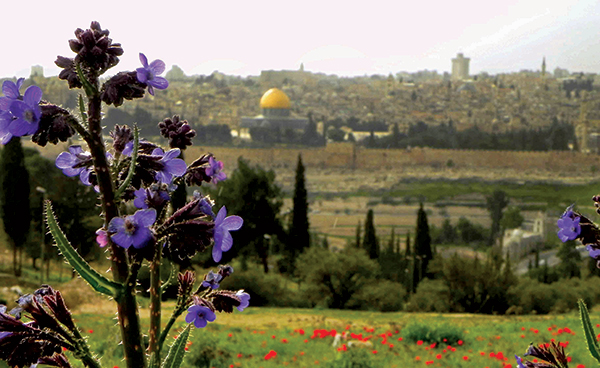
 The Old City of Jerusalem, a UNESCO World Heritage Site (1981) and a World Heritage Site in Danger (1982), carries both titles as a testimony to the special condition of the city. The beauty, significance, and uniqueness of the city easily make it of outstanding universal value, but as we witness firsthand the structural changes in the city’s social, economic, and historical fabric as a result of the accumulation of Israeli policies, we cannot afford to be emotional and nostalgic. The Welfare Association made a clear decision to establish a professional technical program to revitalize the Old City and its environs in 1994, and this program has not only been working on the restoration of historic buildings and monuments in the Old City, but it has also been learning from all the diversity and problematics the city has to offer. Only a few places in the world would have this exceptional challenge to offer, and we consider ourselves lucky to be there and learn from it every day.
The Old City of Jerusalem, a UNESCO World Heritage Site (1981) and a World Heritage Site in Danger (1982), carries both titles as a testimony to the special condition of the city. The beauty, significance, and uniqueness of the city easily make it of outstanding universal value, but as we witness firsthand the structural changes in the city’s social, economic, and historical fabric as a result of the accumulation of Israeli policies, we cannot afford to be emotional and nostalgic. The Welfare Association made a clear decision to establish a professional technical program to revitalize the Old City and its environs in 1994, and this program has not only been working on the restoration of historic buildings and monuments in the Old City, but it has also been learning from all the diversity and problematics the city has to offer. Only a few places in the world would have this exceptional challenge to offer, and we consider ourselves lucky to be there and learn from it every day.
Over the past 20 years, the Old City of Jerusalem Revitalization Programme (OCJRP) has developed in scope, knowledge, and abilities thanks to Jerusalem. Working in significant monumental buildings – such as the Museum of Al-Haram Al-Sharif, the various Mamluk Madrassas in the vicinity of Al-Haram, such as Al-Ashrafiyyeh, Al-Manjakiyya and Al- Omariyyeh, among others, Dar Al-Aytam Al-Islamiyyah, the Armenian Museum, and many architectural jewels – challenged us to become masters at our profession. It challenged us to develop our skills and to raise the bar for the quality of restoration works that adhere to international standards. Knowledge and skill in restoration works have become the cornerstone of our program.
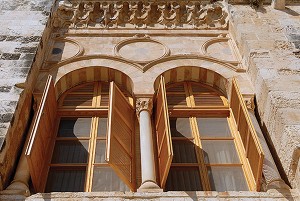
But buildings are not about stone, they are about people and people’s needs as well. This stands true for all historic cities, but in Jerusalem the need is acute and is sometimes in conflict with the conservation principles we dearly hold. With a consistent increase in the number of residents in the city who are trying to safeguard their Jerusalem residence status, the emigration of young couples and affluent and middle-class families from the Old City, the deteriorating physical and structural conditions of historic buildings, the demise of public spaces, and the continuous attacks of Israeli settlers, the city is in a vicious cycle of deterioration on all levels, and it is our responsibility as community members to try to use our limited resources to break that cycle. One of our greatest resources, other than human resources, is our cultural heritage. In 2000, OCJRP led the effort to develop a revitalization plan for the Old City. The plan was based on sectorial studies and community consultations and was prepared by a multi-disciplinary team of experts. The plan highlighted the main issues to be targeted in the Old City and set out key actions for implementation. The implementation of the plan depended on the concerted efforts of all actors in Jerusalem who were also part of its development. The plan and the research linked to it allowed us at OCJRP to develop our intervention logic and scale.
OCJRP adopted a four-tiered program: restoration, documentation, capacity building, and community participation. Parallel to the direct provision of services, the program focuses on behavioral change, capacity building, and knowledge generation not just for our direct constituents but also for the professional community and ourselves.
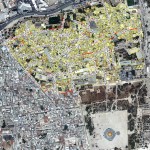
Restoration followed two tracks: housing and public buildings. In housing, the predicament was and still is how to re-adapt houses to modern needs while saving the integrity of historic buildings. We have to deal with irregular additions, severe humidity problems, insanitary bathrooms and kitchens, and highly unappreciated but priceless architectural elements and details, among many other issues that are surely known to all.
The program has restored more than 650 housing units to date and devised three tracks for housing restoration in order to increase efficiency and decrease response time: total restoration, emergency restoration, and fast-track projects. Still the need is high, and it is estimated that there are another 1,500 housing units that need intervention. In public buildings, we worked on the conservation and adaptive reuse of historic buildings to service institutions that support the community of Jerusalem. More than 60 buildings were restored through this program that not only provided the needed infrastructure for communal institutions to function in a healthy environment but also gave us long-term partners in the process of reviving Jerusalem.
Documentation and research would go hand in hand with restoration. Our work in the Old City gave us the advantage of close proximity to invaluable knowledge, for which we used different forms for collection. OCJRP owns one of the most extensive architectural databases on the Old City and uses this to support revitalization works by this program and others, as well as for spreading knowledge among the academic and professional communities.
♦ The Old City of Jerusalem Revitalization Programme (OCJRP) was established by the Welfare Association in 1994, with primary funding from the Arab Fund for Economic and Social Development in order to achieve sustainable development and renewal of Jerusalem’s much neglected Old City. The program is recognized internationally as a signal program in its field: in 2004 OCJRP received the prestigious Aga Khan Award for Architecture in its ninth award cycle. OCJRP recognizes the efforts and contributions of all individuals who have been part of its 20-year journey, and to whom we are indebted. For more information, please visit http://ocjrp.welfare-association.org/en/.
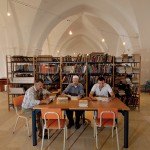
Capacity building, on the other hand, targeted fresh graduates, professionals, craftspeople, workers, etc., the entire circle of individuals in the conservation-production cycle. With the Israeli mobility and access restrictions, the labor market in Jerusalem is constricted, and hence our pool of knowledgeable workers, architects, and contractors has been small. To that end, tens of individuals have been trained by both local and international experts through various courses, training sessions, and internship opportunities. Jerusalem opened the doors for us to communicate with the international professional community and attract the best possible experts.
OCJRP works mainly with two community groups: families using the historical buildings, and youth and children. As architects, communication may not be our strongest skill, but if we are to work in the Old City, communication is essential. Perhaps this was and still is our main challenge. How to balance needs and expectations with abilities and resources? How to let appreciation of historic elements seep into people’s hearts while they struggle to survive in the city? These questions are obviously not easy to answer! We have been doing this for 20 years, and we still have a long way to go.
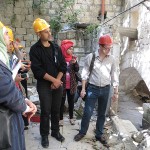
The program’s four tiers intertwine in a continuously changing environment that poses new challenges every day. Our flexibility is tested when it comes to finding ways to overcome restrictions posed by the occupation and developing community participation tools; and our rigidity is tested when it comes to rigorous research and strict upholding of conservation guidelines. After more than a decade of working in Jerusalem, it was time for the next step. Our work has equipped us with the tools to replicate and build on the experience in other cities in Palestine; so Nablus was next. We have been working in Nablus for more than seven years now, exchanging knowledge between the two cities. This year, OCJRP will also start to work in Arrabeh.
In addition to moving to new geographies, in 2007 OCJRP took the first steps towards the amalgamation of all its knowledge and activities into the institutionalization of a center of excellence for rehabilitation to be based in Jerusalem to offer services locally and regionally. The Institute for Architectural Heritage Preservation in Jerusalem is now in the second phase of planning and establishment. We still have a long way to go, but we are on track towards establishing a rigorous research and practice center that focuses on issues of restoration and rehabilitation.
The beauty of Jerusalem, its value and its significance, may stir various emotions among those who live or visit the city, but it also puts us in a spot where we have to carefully calculate our steps as we work in a dynamic and conflictual environment. The city is not easy; every stakeholder has a stake in the work we do. Owners, residents, users, contractors, merchants, and even the occupation authorities have an influence on our work, and we have learned how to develop a dynamic and flexible approach to meet their needs and address the constrictions. Jerusalem offers us the opportunity to become better at what we do, to excel in our work and to always seek innovative solutions to the problems at hand. Thank you, Jerusalem, for making us better, and thank you for giving us the chance to learn to use our knowledge in other places in Palestine.
Article photos: courtesy of The Old City Revitalization
Programme/Welfare Association.

